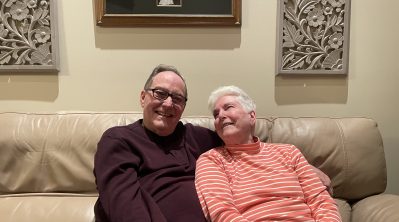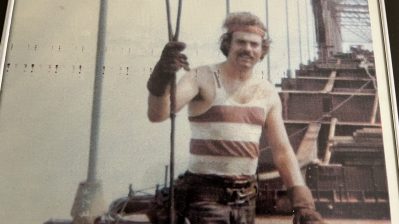Where to put all our nuclear waste?
Kai Ryssdal: We have, in this country alone, something like 70,000 tons of high level nuclear waste — 250,000 worldwide, give or take. What we don’t have, here or anywhere else, is a place to put it all. And figuring that out means you have to convince people it’ll be okay to store nuclear waste where they live.
Cori Princell reports.
Cori Princell: What’s more powerful than Caesium-137, Strontium-90 and Plutonium-239, all put together? NIMBYism-101. I’m in Gorleben, Germany, descending down into the earth more than half a mile.
Peter Ward is a geologist who works at the mine.
Peter Ward: We’re now standing at shaft number one and this is the main shaft down into the mine.
In the 1970s, the German government picked this site as the place where it would bury its nuclear waste forever. Like their counterparts in the U.S., they chose a sparsely populated area with what they thought was great geology for stuff that basically has to sit around for hundreds of thousands of years. Thirty-five years later, they’re still studying it.
Ward: We are exploring the salt dome to find out if it’s suitable for the storage of radioactive waste.
Underneath Gorleben is a massive underground salt deposit, called a salt dome. And when the elevator doors open, the ground under our feet and the tunnel walls arching over our heads are white. You can even feel fine particles of salt in the air.
Ward says these conditions are perfect for storing nuclear waste. It’s dry, geologically stable, and salt has interesting properties. If any fluid gets to it, it forms a watertight seal. And if it’s disturbed, salt flows, surrounds, and entraps. Ward says a canister of nuclear waste would get safely locked away.
Ward: It will be closed in like that, it will be hermetically sealed, this is the idea behind salt.
And yet, there’s no nuclear waste here — 35 years later, the German government still hasn’t approved the site. Protests are an almost daily event in Gorleben.
Klaus Pohlandt has lived in this area — and fought nuclear waste since the beginning. He says the community never had any input into the site’s selection. They’re still mad, and they’ll keep fighting it.
Klaus Pohlandt: We don’t trust nobody of our authorities, never.
That sentiment is echoed from Gorleben to Nevada and around the world.
Frank Hansen: The only way to be successful is to have a volunteer site.
Back in the U.S., Frank Hansen studies nuclear waste storage at Sandia National Labs in Carlsbad, N.M.
Hansen: That is the other half of what you need, you need the science and you need the community.
The situation in Germany is a lot like the situation here in the U.S. — stalemated. Until recently. Earlier this year, a presidential commission toured the country and one place they visited was the Waste Isolation Pilot Plant, or WIPP, a low-level nuclear waste storage site not far from Carlsbad. That site may have those two things going for it. Geology — it’s a big salt deposit like in Germany — and local support.
Bob Forrest is a former mayor who helped bring WIPP to Carlsbad.
Bob Forrest: We had housewives for WIPP, we educated the public, we’ve taken everybody in the world through this facility.
And Forrest says, what Carlsbad told the commission is that they want the high level stuff.
Forrest: Bring that stuff to WIPP and cut out the red tape, you know if they want to save money and cut back and do the right thing, and the public wants it. God there’s not a better opportunity than to expand this project.
The presidential commission wasn’t charged with selecting a new nuclear waste site. But one of its members is now heading the Nuclear Regulatory Commission. In fact, at her confirmation hearing, Allison Macfarlane mentioned Carlsbad. We don’t need to look to other countries for lessons on nuclear waste, she said – suggesting we already have answers right here.
I’m Cori Princell for Marketplace.
Kai Ryssdal: Cori’s report is part of the public radio project Burn: An Energy Journal. It’s from SoundVision Productions and produced in association with APM. Special thanks to the National Science Foundation.
There’s a lot happening in the world. Through it all, Marketplace is here for you.
You rely on Marketplace to break down the world’s events and tell you how it affects you in a fact-based, approachable way. We rely on your financial support to keep making that possible.
Your donation today powers the independent journalism that you rely on. For just $5/month, you can help sustain Marketplace so we can keep reporting on the things that matter to you.


















